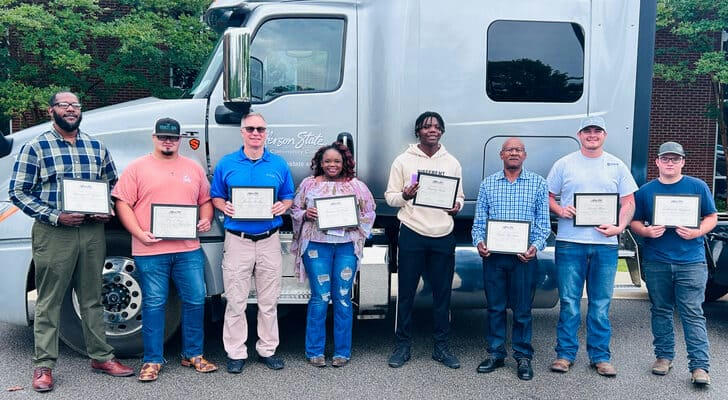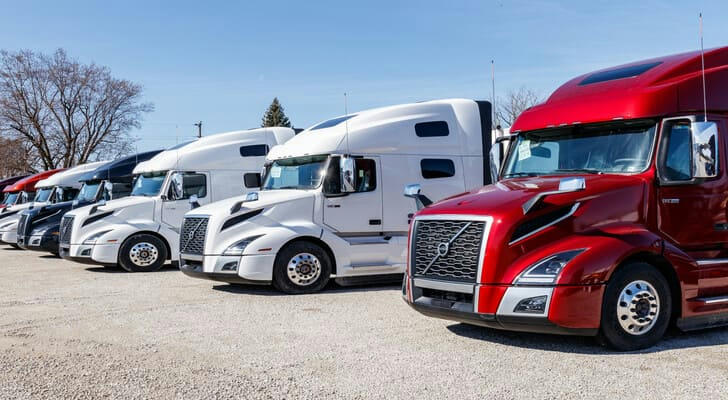How Free CDL Courses Can Help You Launch a Career in Trucking
The trucking industry plays a vital role in the global economy, offering stable jobs and competitive wages. However, to break into this industry, aspiring drivers must obtain a Commercial Driver’s License (CDL), which typically requires costly training. Fortunately, free CDL courses provide an affordable pathway for individuals eager to pursue a career in trucking without incurring high educational expenses. This article explores how these programs can help you enter the industry and build a successful career.

1. The Growing Demand for Truck Drivers
Industry Growth
The demand for truck drivers has increased significantly, driven by e-commerce and global supply chain expansion. As online shopping continues to grow, businesses need reliable drivers to ensure timely deliveries. This trend is expected to persist as consumer demand for goods continues to rise, creating a constant need for skilled drivers.
Job Security
Trucking offers high job security, unlike many other industries affected by market fluctuations. Trucks are responsible for transporting a large portion of goods across the U.S., making the role of truck drivers essential to the economy. Additionally, the shortage of drivers means that qualified truck drivers are in high demand, offering stable employment opportunities.
Driver Shortage
The trucking industry currently faces a significant shortage of drivers, estimated at over 60,000 by the American Trucking Associations (ATA). With many veteran drivers retiring and fewer younger drivers entering the field, the shortage has created abundant opportunities for newcomers. Free CDL courses make it easier for people to enter the workforce and address this growing demand.

2. What is a CDL and Why Do You Need One?
Definition and Importance
A Commercial Driver’s License (CDL) is required to operate large commercial vehicles like trucks and buses. It ensures that drivers are equipped with the necessary skills and knowledge to operate these vehicles safely. Without a CDL, it’s illegal to drive most commercial vehicles, and obtaining one is a key step for anyone looking to pursue a trucking career.
Types of CDL
There are three classes of CDLs:
• Class A: Required for large combination vehicles like 18-wheelers.
• Class B: For single vehicles weighing over 26,001 pounds, such as buses.
• Class C: For vehicles transporting hazardous materials or other specific vehicles not covered by the other two classes.
Employer Requirements
Most trucking companies require a valid CDL to be hired. It proves to employers that applicants have the necessary skills and training to safely drive commercial vehicles. Many companies offer additional on-the-job training, but having a CDL is often the baseline requirement.

3. How Free CDL Courses Work
Availability of Free Programs
Free CDL training is offered through various sources, including government programs, non-profits, and employer-sponsored initiatives. Local workforce agencies, community colleges, and some trucking companies provide free or low-cost CDL training. For instance, CrossPurpose offers free CDL A training and certification in partnership with Carter Truck Driving Academy, providing an opportunity for individuals to gain valuable skills and start a trucking career. Additionally, Red Hook on the Road assists individuals in obtaining a Class B CDL license, helping people enter the workforce and meet the industry’s growing demand.
Funding and Scholarships
Many free CDL programs are funded through federal and state grants, scholarships, or low-interest loans. These financial aids help cover tuition fees, books, and testing costs, making it easier for individuals from low-income backgrounds to afford training.
Online vs. In-Person Options
While many programs are offered in-person, online CDL training has become more popular due to its flexibility. Online courses allow learners to study at their own pace, making them ideal for individuals with busy schedules. However, practical driving hours are typically completed in person. It's important to choose the format that best suits your learning style and availability.
4. Benefits of Free CDL Courses
Cost Savings
The most significant advantage of free CDL courses is the cost savings. Traditional training can cost thousands of dollars, but free programs eliminate this financial barrier. By taking advantage of these courses, aspiring drivers can enter the field without the burden of student loan debt.
No Debt, No Problem
Free CDL programs allow individuals to start their careers without accumulating debt, giving them a solid financial foundation to build upon. This financial freedom enables new drivers to focus on their work and career growth without worrying about monthly loan payments.
Job Placement Assistance
Many free CDL programs offer job placement assistance, helping graduates secure employment after completing their training. This is especially beneficial for newcomers to the industry, as it connects them with employers seeking qualified drivers. For example, CrossPurpose, in partnership with Carter Truck Driving Academy, offers job placement services to help graduates find their first trucking job.
Comprehensive Training
Free CDL programs often provide high-quality training, covering not only essential driving skills but also vehicle maintenance, road safety, and defensive driving. This comprehensive approach ensures that graduates are well-prepared to handle the challenges of the trucking industry.
5. Steps to Launch a Trucking Career with Free CDL Training
Step 1: Research Available Free Programs
Start by researching free CDL programs in your area. Many local workforce development agencies, community colleges, and trucking companies offer free or low-cost training. For example, CrossPurpose and Carter Truck Driving Academy provide free CDL A training, while Red Hook on the Road helps individuals obtain their Class B CDL. These programs can help you get started on your trucking career.
Step 2: Meet Eligibility Requirements
Ensure you meet the eligibility criteria, such as age, driving record, and residency status, which vary by program.
Step 3: Enroll and Complete the Training
Once you’ve found a suitable program, enroll and commit to completing the training. This will include both classroom lessons and hands-on driving practice.
Step 4: Take the CDL Test and Obtain Your License
After completing the training, you’ll need to pass written and driving skills tests to obtain your CDL.
Step 5: Apply for Jobs in the Trucking Industry
After obtaining your CDL, begin applying for trucking jobs. Utilize job placement resources offered by your training program to help you land your first position.
Conclusion
Free CDL courses provide an excellent opportunity for individuals looking to enter the trucking industry. With high demand for drivers and job security, trucking offers a promising career path. By taking advantage of free training programs, aspiring drivers can avoid costly tuition fees and gain the skills needed to succeed in the industry. Start researching free CDL courses today and take the first step toward launching your trucking career.
